Main content:
- Garmin Forerunner 970 vs 965 - Design and Durability
- Garmin Forerunner 970 vs 965 - Display
- Garmin Forerunner 970 vs 965 - Health Monitoring Feature
- Garmin Forerunner 970 vs 965 - Sports Features
- Garmin Forerunner 970 vs 965 - Battery Life and Charging
- Forerunner 970 vs 965 - A Leap in Smart Features and Interaction
- Forerunner 970 vs 965 - Which Offers the Best Value?
Garmin’s Forerunner series has long been a favorite among runners and multi-sport athletes for its precision and performance. Among its standout releases, the Forerunner 965 (2023) and the Forerunner 970 (2025) represent two flagship models tailored for different levels of athletic needs.
The Garmin Forerunner 965 focuses on high value and all-around training support, offering accurate performance tracking, detailed metrics, and a vibrant AMOLED touchscreen - making it ideal for beginner to advanced runners. On the other hand, the Garmin Forerunner 970 brings a new level of refinement with upgrades like a titanium bezel, sapphire glass, fifth-generation heart rate sensor, LED flashlight, voice call capability, and health features such as skin temperature and ECG support. It’s clearly designed for more demanding users who require deeper insights and smarter daily health tools.
While both watches share premium features like multi-band GNSS, Garmin Pay, offline music, and rich training metrics, their differences in material quality, sensor depth, and smart interactivity reflect two distinct product philosophies.
This article will compare the Garmin Forerunner 970 vs 965 in key areas including build quality, health tracking, sports features, battery life, and user interaction - helping you decide which one truly fits your training and lifestyle needs. You can also check out Bandletic’s Garmin watch bands - a reliable brand known for quality watch accessories, including:
Garmin Forerunner 970 vs 965 - Design and Durability
In terms of design and durability, the Garmin Forerunner 965 and 970 take distinct yet premium approaches. The Forerunner 965 sports a sleek, streamlined look with a titanium alloy bezel and a fiber-reinforced polymer case. It’s both lightweight and robust, measuring 47.2 x 47.2 x 13.2 mm and weighing just 53 grams - ideal for daily wear and extended training. Paired with the right Garmin Forerunner 965 bands, the watch offers not only comfort but also versatile style for both fitness and casual settings.
The Garmin Forerunner 970 builds on that solid foundation with several upgrades. While it retains a similar 47mm case size, its design features sharper lines and a more modern, high-tech aesthetic. A major enhancement is the switch from Corning Gorilla Glass 3 (used in the 965) to ultra-durable sapphire crystal glass in the 970. With a Mohs hardness rating of 9 - just below diamond - sapphire glass delivers superior scratch resistance, making the 970 ideal for rugged outdoor use like trail running and mountain hikes.
Weighing slightly more at 56 grams, the Forerunner 970 still feels light on the wrist, and the added heft enhances shock resistance. When matched with high-quality Garmin Forerunner 970 bands, this watch combines resilience and refined design, perfect for athletes who demand both performance and durability.
Summary
The Forerunner 965 prioritizes lightweight comfort, making it well-suited for running, fitness, and daily use. In contrast, the Forerunner 970 emphasizes enhanced durability and ruggedness through sapphire glass and reinforced construction, targeting serious athletes and outdoor enthusiasts facing demanding conditions.
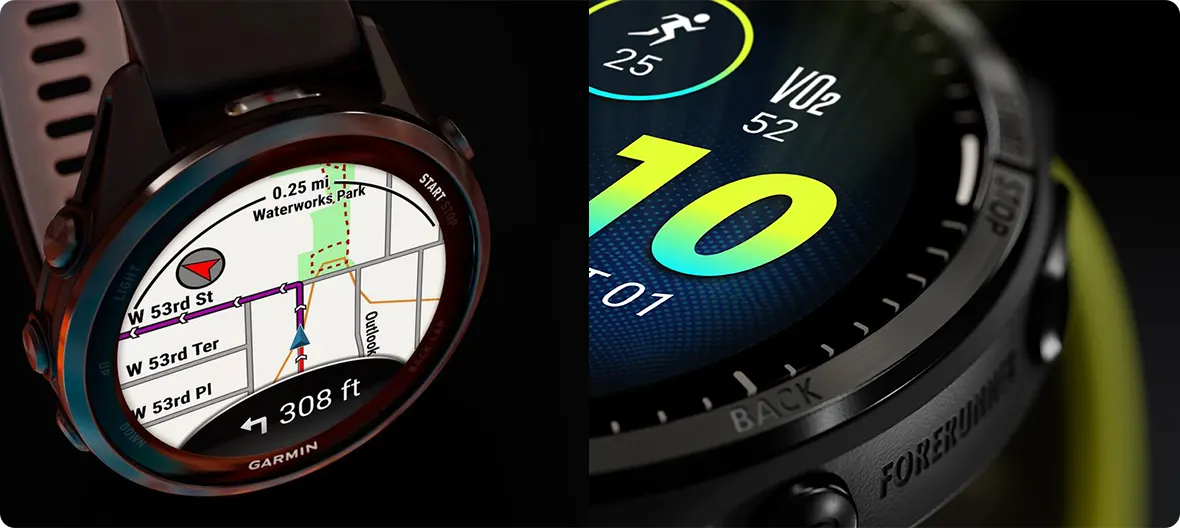
Garmin Forerunner 970 vs 965 - Display
The Garmin Forerunner 970 and 965 feature subtle but important differences in their displays. Both are equipped with a 1.4-inch AMOLED touchscreen with a sharp 454×454 resolution, delivering clear and vibrant visuals.
In terms of screen material, the 970 uses scratch-resistant sapphire glass with a Mohs hardness close to 9, making it highly durable and resistant to scratches - ideal for outdoor use. The 965, on the other hand, employs Corning Gorilla Glass 3, which offers good scratch resistance but is less durable compared to sapphire glass.
Brightness-wise, the 970 offers a noticeable boost, especially under direct sunlight. Its higher brightness and reduced glare improve outdoor visibility and make data easier to read. While the 965’s AMOLED screen performs well under normal lighting, it is slightly less visible in bright outdoor conditions.
Summary
Overall, the Forerunner 970 stands out with its sapphire glass and enhanced brightness, providing superior durability and outdoor readability - perfect for all-weather and high-intensity outdoor activities.
Garmin Forerunner 970 vs 965 - Health Monitoring Feature
The Garmin Forerunner 965 and 970 each have their own focus in health monitoring. The Forerunner 965 is equipped with the 4th generation Elevate heart rate sensor, supporting heart rate, blood oxygen, stress, and sleep monitoring. It also offers advanced running metrics such as vertical ratio and ground contact time, making it suitable for daily health management and basic fitness tracking.
The Forerunner 970, on the other hand, upgrades to the 5th generation Elevate heart rate sensor, improving heart rate data accuracy. It adds skin temperature and respiratory variation index monitoring, providing a more comprehensive reflection of health status, which is particularly helpful for sleep quality and female menstrual cycle prediction. Additionally, the 970 supports ECG (electrocardiogram) functionality (not yet enabled domestically) and introduces a "Running Economy" metric, which requires pairing with the HRM-600 heart rate strap to quantify running efficiency through data such as speed loss.
Summary
Overall, the 970 focuses more on in-depth analysis of athletic performance and continuous health data monitoring, making it suitable for professional athletes and advanced users. The 965 leans more toward daily health management, meeting basic health monitoring needs.
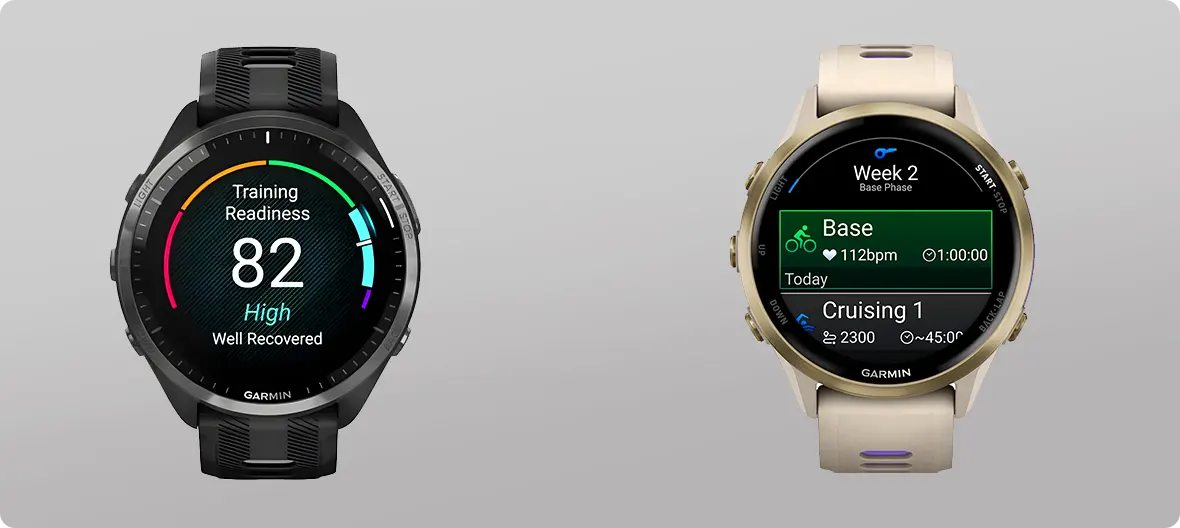
Garmin Forerunner 970 vs 965 - Sports Features
The Garmin Forerunner 965 supports over 50 sports modes, including running, cycling, and swimming. Its multi-frequency, multi-satellite GPS technology ensures accurate tracking, with real-world 5K runs showing only 150-200 meters deviation, meeting everyday fitness needs.
The Forerunner 970 builds on this with hardware and algorithm upgrades. It adds an LED flashlight with adjustable brightness and strobe modes to improve safety during night runs. Advanced running metrics like Speed Step Loss (SSL) and Running Endurance require pairing with the HRM-600 heart rate strap. Its GPS accuracy in track mode outperforms competitors, making it ideal for serious runners.
Additionally, the 970 expands sports modes to include triathlon transitions, multisport training, obstacle racing, kayaking, snorkeling, sailing, fishing, and winter sports like cross-country skiing, catering to diverse outdoor and seasonal activities. Both watches support multi-band GPS and SatIQ technology for precise positioning in various environments.
Overall, the Forerunner 965 suits basic workouts and daily training, while the 970 offers richer sport modes and deeper performance analytics to help athletes optimize training and achieve smarter workouts.

Garmin Forerunner 970 vs 965 - Battery Life and Charging
When it comes to battery performance and charging, the Garmin Forerunner 970 and 965 are optimized for different user needs.
Battery Life Comparison:
- Smartwatch Mode: The 965 offers up to 23 days, while the 970 lasts up to 15 days - better suited for long-term daily wear.
- GPS Mode: 965 lasts up to 31 hours, 970 up to 26 hours. Both are capable of supporting long-distance activities.
- SatIQ (Auto GNSS): The 970 slightly edges out the 965 with 23 hours versus 22 hours.
- Multi-Band GNSS Mode: The 970 lasts up to 21 hours, outperforming the 965’s 19 hours - delivering better efficiency with high-precision tracking.
- Multi-Band + Music Mode: The 970 offers up to 12 hours, significantly more than the 965’s 8.5 hours - ideal for workouts with music.
- UltraTrac Mode: Exclusive to the 965, reaching up to 34 hours - great for ultra-endurance events.
Charging Comparison:
Both models support fast charging via USB-C. The 970 works well with a 5W adapter, while the 965 performs best with a 15W adapter. In real-world use, both charge quickly enough for regular and training needs.
Summary:
The Forerunner 965 is ideal for users prioritizing long smartwatch battery life and extreme endurance scenarios. The 970 excels in high-precision GPS and music-supported workouts. Choose the 965 for extended daily use, or go with the 970 for performance-focused training.

Forerunner 970 vs 965 - A Leap in Smart Features and Interaction
Both the Garmin Forerunner 970 and 965 feature a 1.4-inch AMOLED touchscreen paired with five physical buttons, delivering a smooth and responsive dual-mode interaction experience. They support call, text, and app notifications once connected to a smartphone, and include customizable widgets such as Morning Report, weather, Body Battery, and training summaries - making day-to-day use intuitive and efficient.
In terms of smart assistant capabilities, both models offer Garmin Pay for contactless payments, offline music storage, and third-party streaming support. The Forerunner 965 provides basic voice feedback, but the 970 takes a significant leap forward by adding a built-in speaker and microphone, enabling Bluetooth calls, voice command interaction, and direct music playback from the watch itself.
The 970 also introduces new features like the “Evening Report,” which summarizes daily activity and recovery insights to help users plan the next day more effectively - adding real utility as a smart health companion.
Additional exclusive features in the Forerunner 970 include skin temperature tracking, an integrated LED flashlight, password protection for enhanced privacy, and ECG functionality (available in select regions), making it more versatile for outdoor and health-conscious users.
Summary:
In summary, while both models share similar interaction design, the Forerunner 970 stands out with its advanced hardware and intelligent upgrades - shifting it from a sports-focused device to an all-around health and lifestyle assistant, ideal for users seeking deeper smart functionality and wellness monitoring.
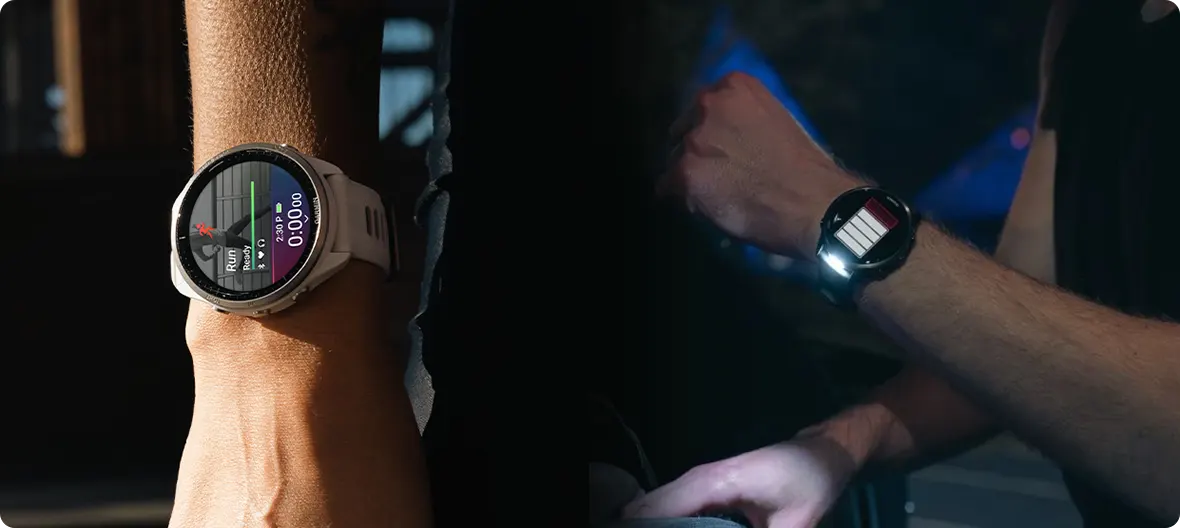
Forerunner 970 vs 965 - Which Offers the Best Value?
The Garmin Forerunner 965 and 970 are both premium smartwatches designed for runners and triathletes but target slightly different user needs. Priced at $599.99, the Forerunner 965 features a 1.4-inch AMOLED touchscreen, full-color maps, advanced training metrics, and smart notifications - providing a comprehensive set of functions that meet the demands of most serious athletes, making it a cost-effective choice with solid performance.
The Forerunner 970, priced at $749.99, costs about $150 more but brings significant hardware and feature upgrades: it introduces a built-in speaker and microphone for Bluetooth calls and voice control, adds an LED flashlight and ECG monitoring (available in select regions), and upgrades materials to a titanium bezel and sapphire crystal lens for enhanced durability - ideal for extreme sports and challenging environments.
If you prioritize core training features and practicality, the Forerunner 965 delivers excellent value. However, if you are a professional athlete seeking advanced health tracking and rugged design for intense conditions, the Forerunner 970 offers clear advantages.
Summary:
In short, the 965 suits users looking for a balanced blend of performance and price, while the 970 targets those needing comprehensive smart features and robust support for demanding scenarios. Your choice depends on your usage goals and budget priorities.
Garmin Forerunner 970 vs 965 - Purchase Recommendations and User Guidance
For professional athletes or advanced fitness enthusiasts, the Garmin Forerunner 970 is the more appealing choice. Beyond basic activity tracking, it integrates advanced health features like running economy analysis, ECG monitoring, and skin temperature sensing. These capabilities allow users to gain deeper insights into their physical condition and optimize their training, making it ideal for those who prioritize scientific training and detailed health management.
If you have budget constraints or mainly focus on everyday exercise and basic health monitoring, the Forerunner 965 offers a mature and reliable solution. It covers essential functions such as map navigation, training metrics, and smart notifications, meeting the needs of most fitness enthusiasts at a more affordable price - offering excellent value for money.
Overall, the Forerunner 970 represents Garmin’s latest advancements in smart health monitoring, suited for users who demand high accuracy and a rich feature set. The Forerunner 965, meanwhile, wins favor with its stable performance and accessible price point, appealing to a broader audience. Choosing the right model based on your training intensity, feature needs, and budget ensures you maximize the value of your watch and support your health and fitness goals effectively.


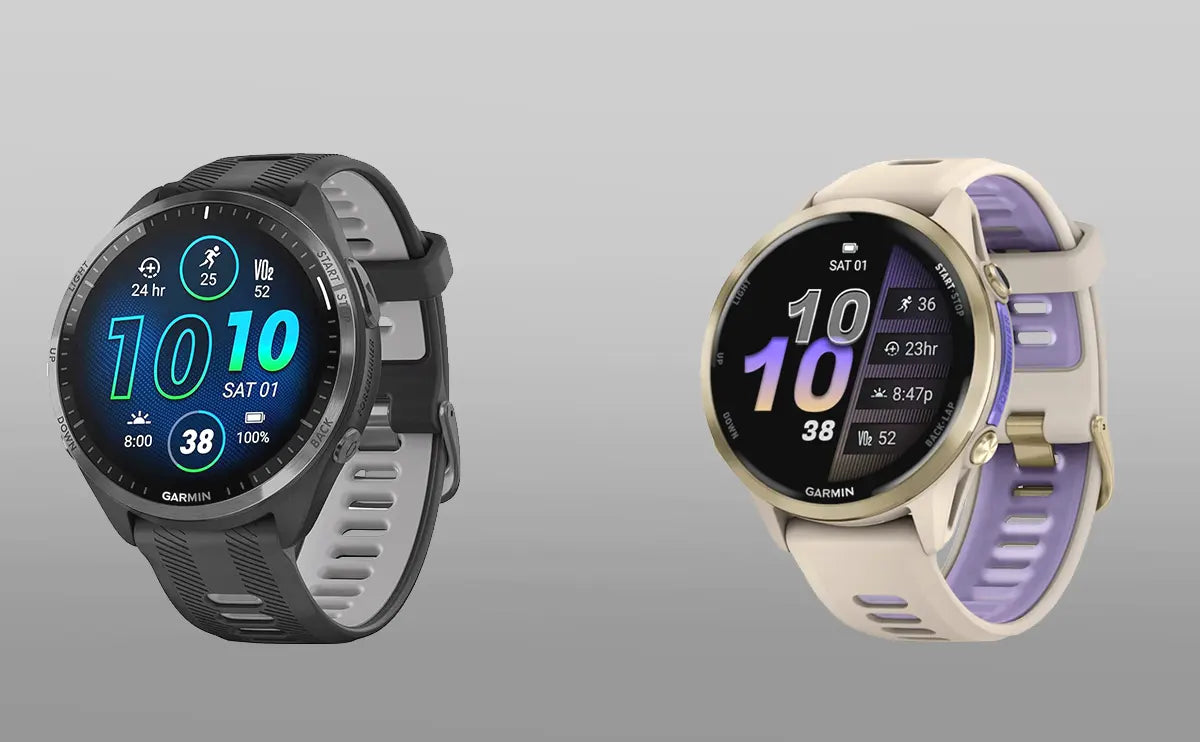
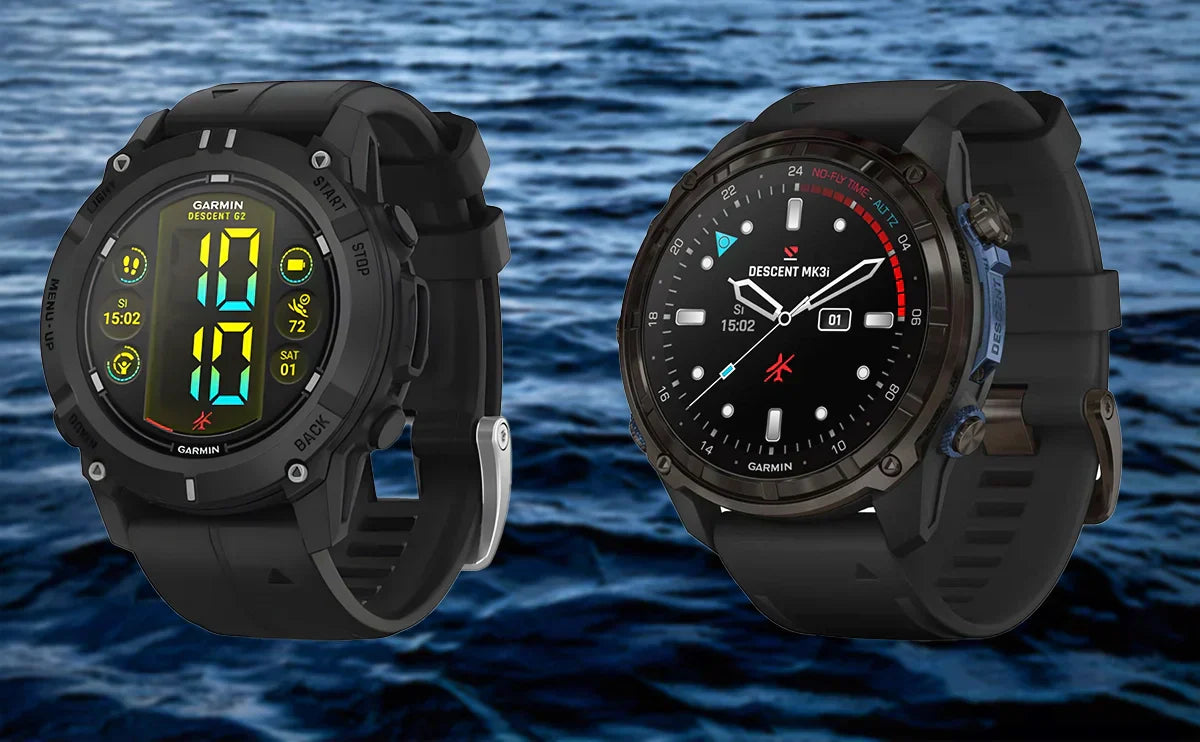
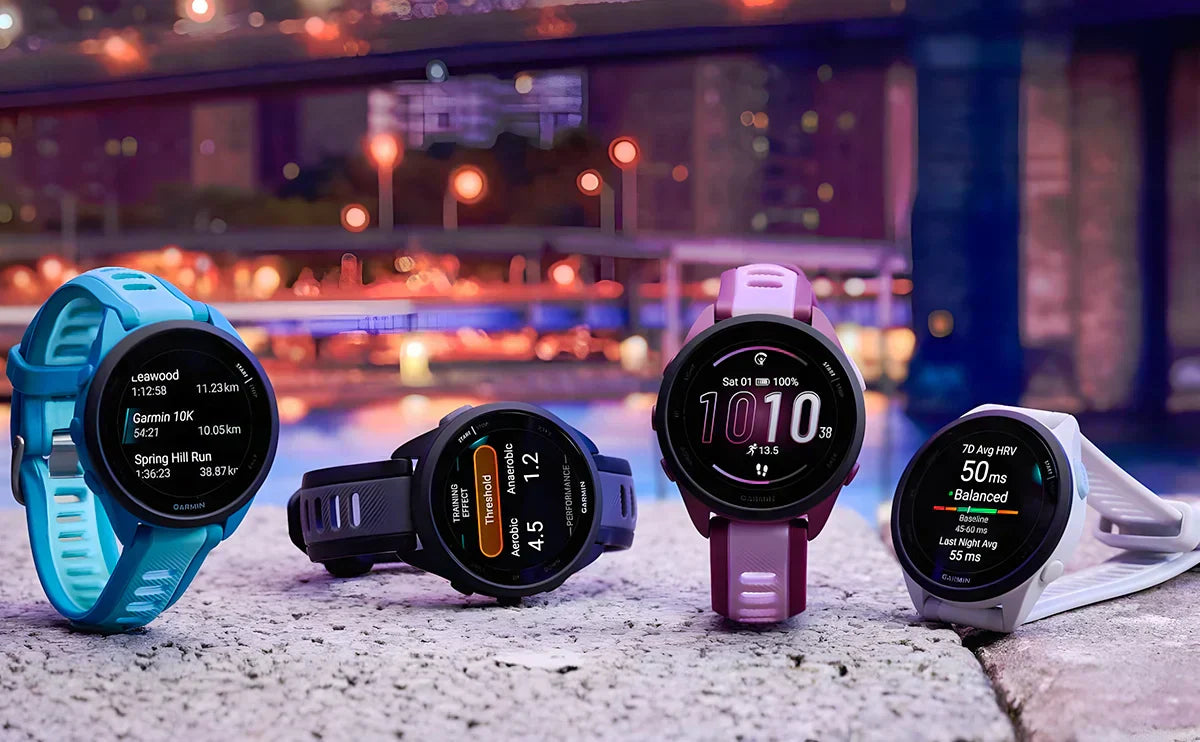
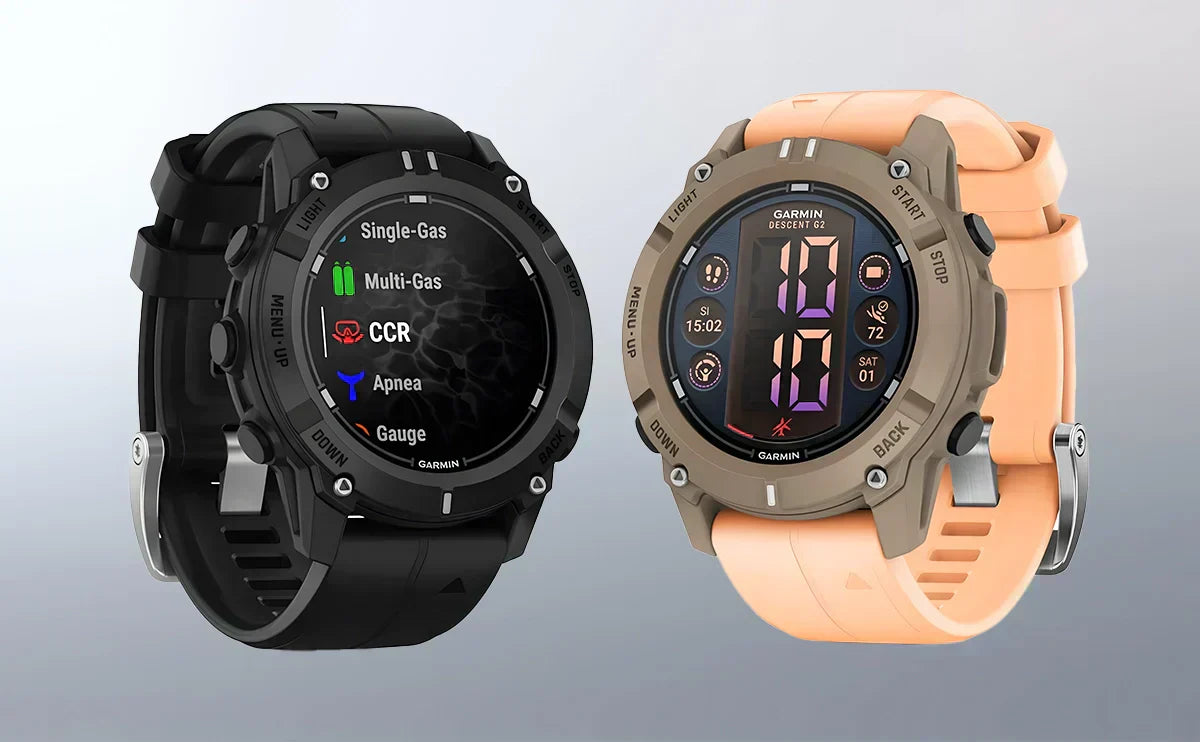
Share:
Garmin Forerunner 970 vs Fenix 8 - Which Premium Watch Should You Choose in 2025?
Top 15 Best Samsung Watch 4 Bands Brands In 2025